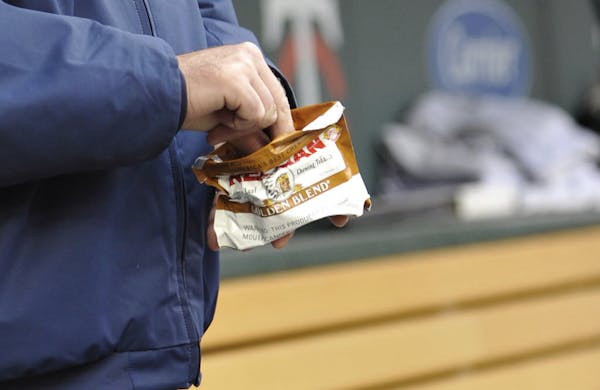 See
more of the story
See
more of the story
It's the bottom of the ninth and the Twins are trailing by two runs in a back-and-forth thriller against Cleveland. Two runners on, two outs when Nelson Cruz steps into the box.
A towering home run to left field. Bomba.
Game over. Big division win.
As Cruz rounds third and reaches home plate, he's greeted by … nobody. No high-fives. No fist bumps. No bear hugs. He's not even allowed a postgame shower before heading home.
This is how baseball could look once games resume.
Is this realistic?
Major League Baseball's 67-page manual outlining safety protocols for return-to-play became public last week. The document is nothing if not thorough in providing a template for how all sports might function under pandemic parameters. That's assuming MLB and its players union can reach agreement on safety and financial provisions.
Momentum for sports to return is building. Hallelujah. (I stumbled across lawn mower racing on TV recently and didn't immediately change the channel.)
How games might look gets complicated.
According to reports, MLB's model covers everything from testing procedures to facility guidelines to game management. Reading through it brings a blunt reminder that "Game on!" will be far more complex than simply telling fans to stay home.
Teams will have to navigate a labyrinth of safety measures just to host one baseball game. Those measures begin before employees arrive at the ballpark and won't end when they leave. For road games, players would need team approval simply to leave the hotel to grab dinner.
Baseball players are sticklers about keeping routines. Throw those out the window. MLB's blueprint essentially redefines how creatures of habit can go about their business.
There is a lot for teams to process and then disseminate to players and coaches in order to change habits and make everyone feel comfortable coming to the ballpark. Communication will be paramount because it's naive to think that every employee is on the same page in terms of understanding the risks of COVID-19 or accepting that extreme safeguards are necessary. A quick check of social media reveals a wide spectrum of opinions on social distancing.
The human element makes it unrealistic that every protocol in MLB's plan will be followed or enforceable. Players aren't robots.
For instance, spitting will be prohibited. By my unscientific calculation, an average MLB player spits 450 times per game. Are they really going to quit cold turkey? Will they be punished for spitting?
Or, say, what happens if players forget protocol in the heat of moment and celebrate with high-fives after an exciting play? Or approach a teammate or coach to discuss strategy without following proper social distancing methods?
Sports can create a million different guidelines, but sports elicit emotion and emotion doesn't get turned off like a faucet. Speaking of which, MLB's plan discourages postgame showers. Good luck with that one.
It's fair to wonder whether athletes and coaches eventually will tire of adhering to strict rules and start cutting corners. Will they lose their diligence or willingness to comply the longer these measures are required? Give-and-take by all parties is necessary.
A lot of thought went into MLB's comprehensive manual, but no plan is foolproof. At best, it can mitigate risks. ESPN reported that NBA Commissioner Adam Silver told owners and executives last week that they shouldn't be discussing return to play if a positive test would cause the league to shutter again.
As society reopens and more testing becomes available, an increase in positive tests is inevitable. Same with sports, no matter how many safeguards are put in place.
Leagues must determine if there will be a threshold that they deem too significant to continue. For instance, what if five players and/or coaches on a team test positive in a week?
Those hypotheticals probably can't be answered right now. Leagues will have to adjust to circumstances as they play out in real time once games resume.
MLB's proposal calls for some radical changes that look strange in the mind's eye. Keeping people safe should be the driving force behind every decision. Besides, strange is certainly better than no sports at all.






